What is the danger zone for high blood pressure. A Visual Guide to High Blood Pressure
What is the danger zone for high blood pressure? Explore the effects of high blood pressure and the treatment options available. Learn about the factors that can increase your risk and how to manage your blood pressure effectively.
Understanding High Blood Pressure
Hypertension, or high blood pressure, is a common condition that affects millions of people worldwide. As we age, the likelihood of developing high blood pressure increases. Blood pressure is the force of blood pressing against the walls of your arteries, and when it’s too high, it can put a strain on your heart and lead to serious health complications.
The Danger Zones of High Blood Pressure
Normal blood pressure readings fall below 120/80. However, there are various stages of high blood pressure, each with its own set of risks and potential consequences.
Elevated Blood Pressure
Elevated blood pressure is consistently just above the normal level, with a systolic (top number) reading between 120 and 129 and a diastolic (bottom number) reading less than 80. People in this range are more likely to develop heart disease than those with lower readings. Lifestyle changes may be recommended to help lower your numbers.

Stage 1 High Blood Pressure
If your systolic reading is between 130 and 139 or your diastolic is between 80 and 89, you have stage 1 high blood pressure. At this stage, you may not experience any symptoms, but the condition can still cause damage to your heart and other organs over time.
Stage 2 High Blood Pressure
A reading of 140 or higher for systolic or 90 or greater for diastolic is considered stage 2 hypertension. This stage carries a higher risk of health complications and may require medication in addition to lifestyle changes.
Hypertensive Crisis
If your systolic is over 180 or your diastolic is above 120, you may be experiencing a hypertensive crisis, which can lead to a stroke, heart attack, or kidney damage. Immediate medical attention is required in this situation.
Risk Factors and Causes of High Blood Pressure
Several factors can increase your risk of developing high blood pressure, including:
- Age: The older you are, the more likely you are to have high blood pressure.
- Gender: Men are more likely to have high blood pressure than women, but the risk evens out as we grow older.
- Family history: If a close family member has high blood pressure, you are more likely to develop it as well.
- Diabetes: People with diabetes have a higher risk of high blood pressure.
- Ethnicity: African Americans are more likely to develop high blood pressure and at a younger age.
- Diet and excess weight: A diet high in sodium and unhealthy foods, as well as being overweight or obese, can contribute to high blood pressure.
Managing High Blood Pressure
Controlling high blood pressure is essential to prevent serious health complications. There are several ways to manage your blood pressure, including:

Lifestyle Changes
Making healthy lifestyle choices can have a significant impact on your blood pressure. This includes reducing your sodium intake, maintaining a healthy weight, exercising regularly, and limiting your alcohol consumption.
Medication
If lifestyle changes alone are not enough to control your high blood pressure, your doctor may prescribe medication to help lower your numbers. It’s important to take any prescribed medications as directed and to work closely with your healthcare provider to find the right treatment plan for you.
Monitoring Your Blood Pressure
Regular monitoring of your blood pressure is essential to managing the condition. This can be done at home with a blood pressure cuff or during visits with your healthcare provider.
Factors that Can Affect Blood Pressure
Certain factors can temporarily or temporarily affect your blood pressure, such as:
- Stress: While stress may cause a temporary spike in blood pressure, there is no clear link between long-term stress and sustained high blood pressure.
- Medications: Some medications, including over-the-counter decongestants, pain relievers, and birth control pills, can raise blood pressure.
- White Coat Hypertension: Some people may have a higher blood pressure reading in a medical setting, but their readings are normal at home.
Complications of Uncontrolled High Blood Pressure
If left untreated, high blood pressure can lead to a range of serious health complications, including:

- Heart disease and heart attacks
- Stroke
- Kidney disease
- Vision loss
- Cognitive impairment
It is essential to take high blood pressure seriously and work with your healthcare provider to manage the condition effectively.
A Visual Guide to High Blood Pressure
Medically Reviewed by Jennifer Robinson, MD on November 12, 2021
Hypertension, or high blood pressure, is a common condition. The older you are, the more likely you are to get it. Blood pressure is the force of blood pressing against the walls of your arteries. When it’s too high, your heart has to work harder. This can cause serious damage to your arteries. Over time, uncontrolled high blood pressure makes you more likely to get heart disease, stroke, and kidney disease.
High blood pressure is often called a silent killer because it doesn’t always have outward symptoms. That means you could have it for years and not know. It can quietly damage your heart, lungs, blood vessels, brain, and kidneys if it isn’t treated. It’s a major cause of strokes and heart attacks in the U.S.
Normal blood pressure readings will fall below 120/80. Higher results over time can indicate hypertension. The top number (systolic) shows the pressure when your heart beats. The lower number (diastolic) measures pressure at rest between heartbeats, when your heart refills with blood.
The lower number (diastolic) measures pressure at rest between heartbeats, when your heart refills with blood.
Elevated blood pressure is consistently just above the normal level — anywhere between 120 and 129 for systolic pressure and less than 80 for diastolic pressure. People in this range are more likely to get heart disease than those with a lower reading. Your doctor may suggest lifestyle changes to help get your numbers down.
You have stage 1 high blood pressure if your systolic reading is between 130 and 139 or your diastolic is between 80 and 89. A reading of 140 or higher systolic or 90 or greater diastolic is stage 2 hypertension. You may not have symptoms. If your systolic is over 180 or your diastolic is above over 120, you may be having a hypertensive crisis, which can lead to a stroke, heart attack, or kidney damage. Rest for a few minutes and take your blood pressure again. If it’s still that high, call 911. Symptoms include a severe headache, anxiety, and nosebleeds.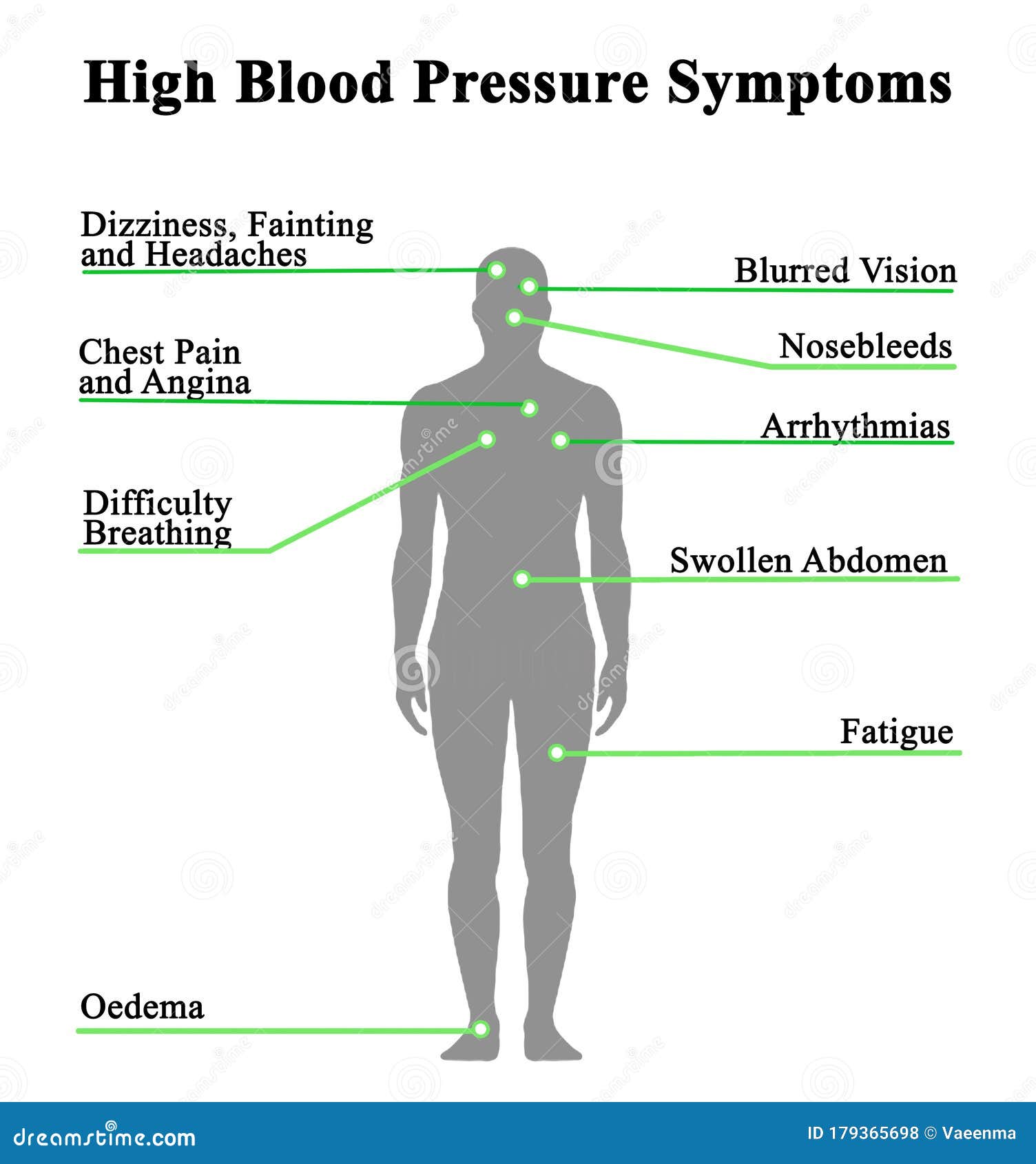 You might feel short of breath or pass out.
You might feel short of breath or pass out.
Up to age 45, men are more likely to have high blood pressure than women. Things even up as we grow older, and by 65 it’s more common in women. You’re more likely to get it if a close family member has it. It’s also widespread among people with diabetes. But in most cases, the cause isn’t known. Sometimes, kidney or adrenal gland disease can bring it on.
African-Americans are more likely to get hypertension — and at a younger age. Genetic research suggests they’re more sensitive to salt. Diet and excess weight make a difference, too.
Or at least watch how much you get. This building block of salt causes your body to retain fluid. That puts a greater burden on your heart and boosts your blood pressure. Aim for less than 2,500 milligrams of sodium per day. You’ll need to check nutrition labels and menus carefully. Processed foods make up the bulk of our sodium intake. Canned soups and lunch meats are prime suspects.
It can make your blood pressure spike, but there’s no proof stress keeps it high long-term. To manage it, stay away from unhealthy things like poor diet, alcohol use, and smoking. All are linked to high blood pressure and heart disease.
To manage it, stay away from unhealthy things like poor diet, alcohol use, and smoking. All are linked to high blood pressure and heart disease.
They put a strain on your heart and raise your odds of having high blood pressure. That’s why diets designed to lower blood pressure also aim to control calories. You’ll cut out fatty foods and extra sugars, while adding fruits, vegetables, lean protein, and fiber. Even a 10-pound weight loss can make a difference.
Too much alcohol can boost your blood pressure. Limit drinks to no more than two a day for men, or one for women. How much is that?
- 12 ounces of beer
- 4 ounces of wine
- 1.5 ounces of 80-proof spirits
- 1 ounce of 100-proof spirits
It can make you jittery, so does caffeine also raise your blood pressure? It might for a little while, but there’s no link between caffeine and hypertension. You can safely drink one or two cups of coffee a day.
Gestational hypertension can affect women who’ve never had high blood pressure before. It usually happens in the second half of pregnancy. Without treatment, it may lead to a serious condition called preeclampsia. This limits blood and oxygen flow to your baby and can affect your kidneys and brain. After delivery, your blood pressure should return to its normal level, but it is possible for the condition to persist for several weeks..
It usually happens in the second half of pregnancy. Without treatment, it may lead to a serious condition called preeclampsia. This limits blood and oxygen flow to your baby and can affect your kidneys and brain. After delivery, your blood pressure should return to its normal level, but it is possible for the condition to persist for several weeks..
Cold and flu medicines with decongestants are one of several classes of medication that can raise blood pressure. Others include NSAID pain relievers, steroids, diet pills, birth control pills, and some antidepressants. If you have high blood pressure, ask your doctor if any drugs or supplements you’re taking could affect your readings.
You may have a high reading only in the doctor’s office. This is probably due to nerves. You might have one only every now and then. This could mean you’re more likely to get high blood pressure later. For a more accurate reading, take your blood pressure at home, chart the results, and share them with your doctor. Bring your home monitor in so the doctor can check the device and your technique.
Bring your home monitor in so the doctor can check the device and your technique.
It’s more often a problem for older people, but children can also have high blood pressure. What’s normal varies based on a child’s age, height, and sex. Your doctor will need to tell you if there’s a concern. Children are more likely to get it if they’re overweight, have a family history of the illness, or are African-American.
You may be able to lower your blood pressure by eating better. The DASH Diet — Dietary Approaches to Stop Hypertension — calls for more fruits, vegetables, whole-grain foods, low-fat dairy, fish, poultry, and nuts. Steer clear of red meat, saturated fats, and sweets. Cutting back on sodium in your diet can also help.
Regular activity helps lower blood pressure. Adults should get about 150 minutes of moderate-intensity exercise every week. That could include gardening, walking briskly, bicycling, or other aerobic exercise. Add in some muscle strengthening at least 2 days a week. Target all your major muscle groups.
Target all your major muscle groups.
Also called water pills, they’re often the first choice if diet and exercise changes aren’t enough. They help your body shed excess sodium and water to lower blood pressure. That means you’ll pee more often. Some diuretics may lower the amount of potassium in your body. You might notice more muscle weakness, leg cramps, and fatigue. Others can boost blood sugar in people with diabetes. Erectile dysfunction is a less common side effect.
These drugs slow your heart rate, which means your ticker doesn’t have to work as hard. They’re also used to treat other heart conditions, like an abnormal heart rate, or arrhythmia. Your doctor may prescribe them along with other medications. Side effects can include insomnia, dizziness, fatigue, cold hands and feet, and erectile dysfunction.
These meds lower your body’s supply of angiotensin II — a substance that makes blood vessels contract and narrow. The result is more relaxed, open (dilated) arteries, as well as lower blood pressure and less effort for your heart. Side effects can include a dry cough, skin rash, dizziness, and high potassium levels. Don’t get pregnant while taking one of these drugs.
Side effects can include a dry cough, skin rash, dizziness, and high potassium levels. Don’t get pregnant while taking one of these drugs.
Instead of lowering your supply of angiotensin II, these drugs block receptors for angiotensin. It’s like placing a shield over a lock. This blockade prevents the chemical’s artery-tightening effects and lowers your blood pressure. ARBs can take several weeks to become fully effective. Possible side effects include dizziness, muscle cramps, insomnia, and high potassium levels. Don’t get pregnant while taking this medication.
Calcium causes stronger heart contractions. These medications slow its movement into the cells of your heart and blood vessels. That eases your heartbeat and relaxes your blood vessels. These meds can cause dizziness, heart palpitations, swollen ankles, and constipation. Take them with food or milk. Avoid grapefruit juice and alcohol because of possible interactions.
Vasodilators, alpha blockers, and central agonists also relax blood vessels.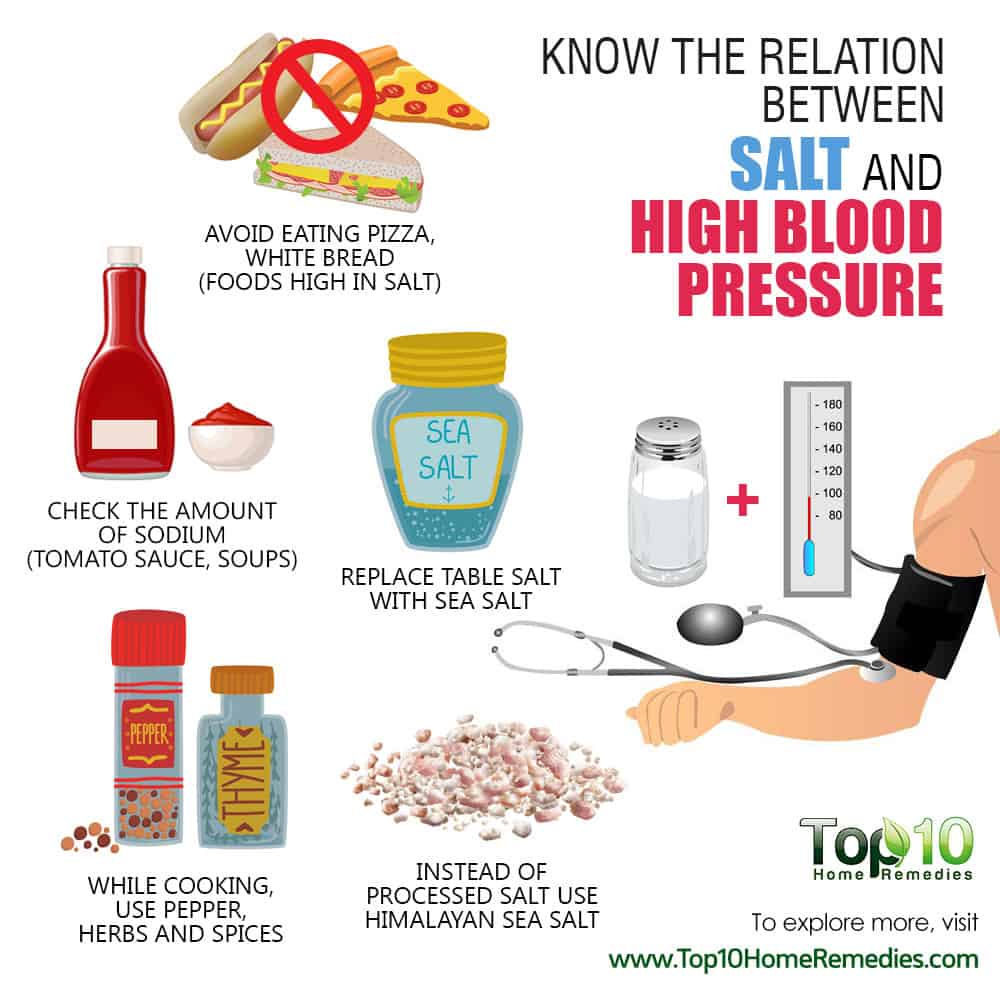 Side effects can include dizziness, a fast heartbeat or heart palpitations, headaches, or diarrhea. Your doctor may suggest them if other blood pressure medications don’t work well enough or if you have another condition.
Side effects can include dizziness, a fast heartbeat or heart palpitations, headaches, or diarrhea. Your doctor may suggest them if other blood pressure medications don’t work well enough or if you have another condition.
Meditation can lower blood pressure by putting your body into a state of deep rest. Yoga, tai chi, and deep breathing also help. Pair these relaxation techniques with other lifestyle changes, like diet and exercise. Be aware that herbal therapies may conflict with other drugs you take. Some herbs actually raise blood pressure. Tell your doctor if you take herbal or other dietary supplements.
Hypertension is often a lifelong condition. It’s important to take your medications and continue to monitor your blood pressure. If you keep it under control, you can lower your odds of stroke, heart disease, and kidney failure.
IMAGES PROVIDED BY:
1) 3D4Medical.com, Photo Researchers
2) Laura Doss/Fancy
3) Jutta Klee/Ableimages
4) Comstock
5) Deborah Davis/Photonica
6) Tiziou/Photononstop
7) Andersen Ross/Blend Images
8) Amana Productions
9) Joanne Obrien/Photolibrary
10) Nisian Hughes/Lifesize
11) Isabelle Rozenbaum/PhotoAlto
12) Wesley Hitt/Tips Italia
13) Erik Isakson/Blend Images
14) Pixtal Images
15) Martin Barraud/OJO Images
16) Image Source
17) Jupiterimages/FoodPix
18) Ariel Skelly/Blend Images
19) iStock, Top Photo
20) Science Picture Co.
21) Steve Oh, M.S. / Phototake
22) Huntstock
23) Val Loh/Photonica
24) Tom Grill/Iconica
25) Stewart Cohen/The Image Bank
26) Foodcollection
SOURCES:
American Heart Association: “Stroke,” “Understanding Blood Pressure Readings,” “What Are the Symptoms of High Blood Pressure?” “Hypertensive Crisis,” “Understand Your Risk for High Blood Pressure,” “High Blood Pressure and African Americans,” “Shaking the Salt Habit,” “Caffeine and Blood Pressure,” “Over-the-Counter Medications,” “High Blood Pressure in Children,” “Types of Blood Pressure Medications.”
CDC: “High Blood Pressure Facts,” “About High Blood Pressure,” “Physical Activity and Health.”
FDA: “Medications for High Blood Pressure.”
National Heart, Lung, and Blood Institute, National Institutes of Health: “What is High Blood Pressure?” “What are High Blood Pressure and Prehypertension?” “Your Guide to Lowering Your Blood Pressure with DASH,” “Living with High Blood Pressure,” “What is Preeclampsia?” “High Blood Pressure Detection,” “How is High Blood Pressure Treated?”
The American College of Obstetricians and Gynecologists: “High Blood Pressure During Pregnancy. “
“
The Harvard Medical School Family Health Guide: “Prehypertension: Does it really matter?”
U.S. Department of Health and Human Services: “Your Guide to Lowering Blood Pressure.”
Verdecchia, P. European Heart Journal, 2002
© 2021 WebMD, LLC. All rights reserved. View privacy policy and trust info
Blood Pressure Chart: Normal, Elevated, High
Blood pressure measures the pressure of the blood in your arteries when your heart beats and when it relaxes. Numbers outside of the typical range can mean your heart is working too hard to pump blood to your body.
You likely already know that your blood pressure is important, and that it can affect your health in many ways.
But what exactly is a healthy blood pressure reading, and what do your blood pressure numbers mean?
In this article, we’ll explain what’s considered normal, elevated, and high blood pressure, and what that means for you and your health.
When a healthcare professional takes your blood pressure, it’s expressed as a measurement with two numbers, one number on top (systolic) and one on the bottom (diastolic), like a fraction. For example, 120/80 mm Hg.
For example, 120/80 mm Hg.
Blood pressure is measured in millimeters of mercury. That’s what the mm/Hg stands for. Here’s what the numbers mean:
- Your systolic pressure (the top number) is the pressure of the blood in your arteries when your heart contracts or beats.
- Your diastolic pressure (the bottom number) is the pressure of the blood in your arteries between beats, when your heart relaxes.
Both numbers are important in determining the state of your heart health.
Numbers greater than the ideal range may be a sign that your heart is working too hard to pump blood to the rest of your body.
For a normal reading, your blood pressure needs to show:
- a systolic pressure that’s above 90 mm Hg and less than 120 mm Hg, and
- a diastolic pressure that’s between 60 mm Hg and less than 80 mm Hg
The American Heart Association (AHA) considers blood pressure to be within the normal range when both your systolic and diastolic numbers are in these ranges.
If you’re in the normal range, no medical intervention is needed. However, it’s important to maintain a healthy lifestyle and moderate weight to help prevent high blood pressure from developing.
You may need to be even more mindful of your lifestyle if high blood pressure runs in your family.
Normal blood pressure
A normal blood pressure reading for an adult is blood pressure that’s below 120/80 mm Hg and above 90/60 mm Hg.
Blood pressure numbers that are higher than 120/80 mm Hg are a warning sign. It means you need to pay attention to your blood pressure and focus on heart-healthy habits.
Although these numbers aren’t technically considered high blood pressure, you’ve moved out of the normal range. Elevated blood pressure may turn into high blood pressure, which puts you at an increased risk of heart disease and stroke.
Elevated blood pressure
When your systolic pressure is between 120 and 129 mm Hg and your diastolic pressure is less than 80 mm Hg, it means you have elevated blood pressure.
No medications are necessary for elevated blood pressure. But your doctor may talk with you about the importance of a healthy lifestyle, such as getting regular exercise, eating a balanced diet, and managing your weight.
You may receive a diagnosis of stage 1 hypertension (the medical term for high blood pressure) if:
- your systolic blood pressure is between 130 and 139 mm Hg, or
- your diastolic blood pressure is between 80 and 89 mm Hg
However, the AHA notes that if you get only one reading this high, you may not truly have stage 1 hypertension. What determines the diagnosis of hypertension at any stage is the average of your blood pressure numbers over a period of time.
Your doctor can help you measure and track your blood pressure to confirm whether it’s too high.
Stage 1 hypertension
If your systolic blood pressure is 130 to 139 mm Hg or your diastolic blood pressure is 80 to 89 mm Hg, it’s considered stage 1 hypertension.
If you’re at lower risk, your doctor may want to follow up in 3 to 6 months after you’ve adopted healthier habits.
If you’re 65 years or older and otherwise healthy, your doctor will likely recommend treatment and lifestyle changes once your systolic blood pressure is greater than 130 mm Hg.
The treatment for adults 65 and older who have significant health problems should be made on a case-by-case basis.
Treating high blood pressure in older adults appears to decrease memory problems and dementia.
Stage 2 hypertension indicates a more serious condition.
You may receive a diagnosis of stage 2 hypertension if:
- your systolic blood pressure is 140 mm Hg or higher, or
- your diastolic blood pressure is 90 mm Hg or higher
At this stage, your doctor will recommend one or more medications to manage your blood pressure.
Medications aren’t the only treatment for this stage, though. Lifestyle habits are just as important in stage 2 hypertension as they are in the other stages.
Stage 2 hypertension
If your systolic blood pressure is 140 mm Hg or higher or your diastolic blood pressure is 90 mm Hg or higher, it’s considered stage 2 hypertension.
A blood pressure reading above 180/120 mm Hg indicates a serious health problem. The AHA refers to these high measurements as a “hypertensive crisis.” Blood pressure in this range requires urgent treatment, even if there are no accompanying symptoms.
Seek emergency medical treatment if you have blood pressure in this range. You may also have symptoms such as:
- chest pain
- shortness of breath
- visual changes
- symptoms of stroke, such as paralysis or a loss of muscle control in the face and an extremity
- blood in your urine
- dizziness
- headache
However, sometimes a high reading can occur temporarily, and then your numbers will return to normal. If your blood pressure measures at this level, your doctor will likely take a second reading after a few minutes.
If your blood pressure measures at this level, your doctor will likely take a second reading after a few minutes.
If your second blood pressure reading is also above 180/120 mm Hg, you’ll need immediate treatment.
Hypertensive crisis
A blood pressure reading above 180/120 mm Hg is considered a hypertensive crisis and could be dangerous. You’ll need treatment as soon as possible.
Share on Pinterest
Treatment for hypertension depends on how high your blood pressure is, as well as your lifestyle and risk factors.
For elevated blood pressure, the goal is to keep your blood pressure from developing into clinical hypertension. No medications are necessary at this stage. Your doctor may recommend:
- eating a more balanced diet
- getting regular exercise
- losing weight if you have overweight or obesity
For stage 1 hypertension, your doctor may recommend lifestyle changes as mentioned above, as well as:
- reducing your sodium intake
- finding healthy ways to manage your stress
- medication, if your blood pressure doesn’t improve after 1 month of lifestyle changes
For stage 2 hypertension, the typical treatment, in addition to a healthier lifestyle, is medication. Your doctor may prescribe one or more of the following medications to help lower your blood pressure:
Your doctor may prescribe one or more of the following medications to help lower your blood pressure:
- ACE inhibitors to block substances that tighten blood vessels
- alpha blockers to help relax the arteries
- beta-blockers to decrease your heart rate and block substances that tighten blood vessels
- calcium channel blockers to relax blood vessels and decrease the work of your heart
- diuretics to decrease the amount of fluid in your body, including your blood vessels
A hypertensive crisis requires immediate treatment. Medications may be given orally or intravenously (through an IV).
The most commonly used medications for a hypertensive crisis include:
- vasodilators, such as hydralazine, nitroglycerin, and nitroprusside
- beta-blockers, such as labetalol (Trandate) and esmolol (Brevibloc)
If your blood pressure is in the hypertensive crisis range and you also have kidney failure, the following medications may be prescribed:
- calcium channel blockers, such as clevidipine (Cleviprex)and nicardipine (Cardene)
- a dopamine D1 receptor agonist called fenoldopam (Corlopam)
Even if you have healthy blood pressure numbers, it’s important to take preventive measures to keep your blood pressure within a normal range. This can help lower your risk of developing hypertension, heart disease, and other complications of high blood pressure.
This can help lower your risk of developing hypertension, heart disease, and other complications of high blood pressure.
As you age, prevention becomes even more important. Systolic pressure tends to creep up once you’re older than 50, and it’s far more important in predicting the risk of coronary heart disease and other conditions.
The following preventive measures may help lower or reduce your risk of developing high blood pressure:
- Reduce your sodium (salt) intake. If you want to follow a heart-healthy diet, try not to consume more than 2,300 milligrams (mg) of sodium per day. If you already have hypertension, may need to limit your sodium intake to less than 1,500 mg per day. Start by not adding salt to your foods. Limit processed foods as well, since they often have a lot of added sodium.
- Exercise regularly. Consistency is key in maintaining a healthy blood pressure reading. It’s better to exercise 20 to 30 minutes every day than a few hours only on the weekends.

- Maintain a moderate weight. If you’re already at a moderate weight, focus on maintaining it. If not, take steps to manage it. Losing even 5 to 10 pounds can make an impact on your blood pressure readings.
- Reduce your caffeine intake. Talk with your doctor to see whether caffeine sensitivity plays a role in your blood pressure readings.
- Manage your stress in healthy ways. Exercise, yoga, deep breathing exercises, or even 10-minute meditation sessions can help.
- Limit your alcohol intake and quit smoking. Cut back on alcohol, or stop drinking alcohol altogether. It’s also important to quit or refrain from smoking. If quitting smoking or limiting alcohol is difficult, reach out to your doctor for support.
Untreated or poorly managed high blood pressure can cause serious and even life threatening issues. It can damage your blood vessels as well as your organs. The longer your hypertension goes untreated, the more it can damage your body and affect your health.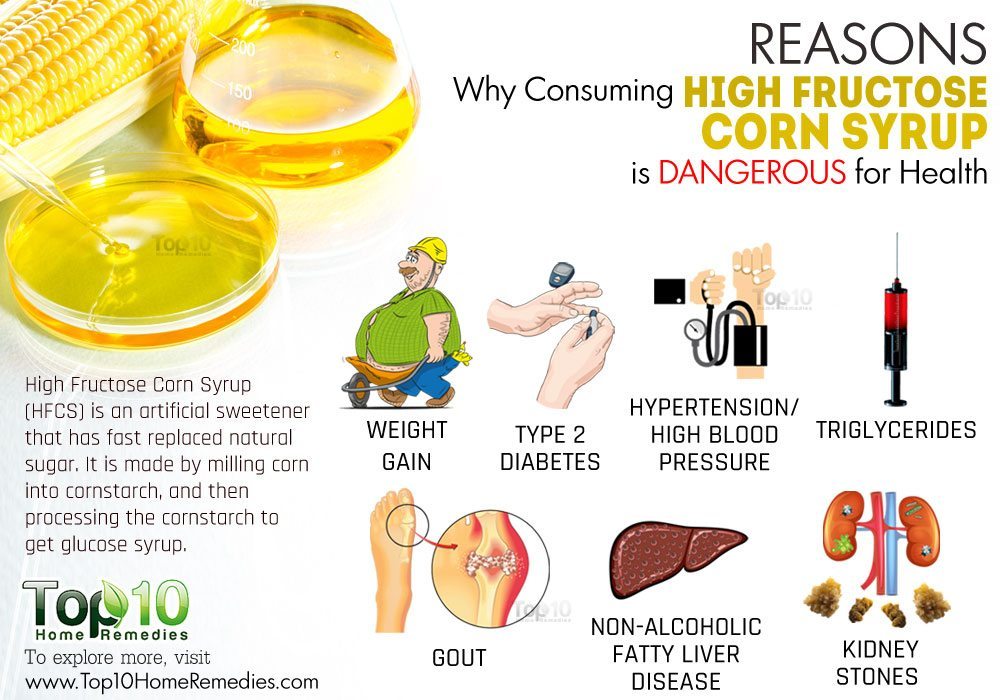
Potential complications of high blood pressure include:
- Heart attack and stroke. Ongoing hypertension can cause your arteries to thicken and harden, which can increase your risk of a heart attack or stroke.
- Heart failure. When your arteries are thickened and hardened, your heart needs to work harder to pump blood throughout your body. This can cause your heart muscle to thicken and eventually lead to heart failure.
- Aortic aneurysm. Elevated blood pressure can cause your blood vessels to weaken and balloon out in the weakened spot, allowing an aneurysm to form. If an aneurysm ruptures, it can be life threatening.
- Kidney failure. High blood pressure can cause damage to the arteries around your kidneys. This can affect how well your kidneys are able to filter your blood.
- Vision loss.
 Elevated blood pressure can damage the blood vessels in your eyes.
Elevated blood pressure can damage the blood vessels in your eyes. - Peripheral artery disease. Hardened arteries can make it more difficult for blood to reach parts of your body that are further away from your heart, like your legs and feet.
- Sexual dysfunction. High blood pressure can lead to erectile dysfunction in men and lower libido in women.
- Vascular dementia. Narrowed or hardened arteries can restrict blood flow to your brain, which, in turn, can increase your risk of a type of dementia known as vascular dementia. This type of dementia can also be caused by a stroke.
Low blood pressure is known as hypotension. In adults, a blood pressure reading of 90/60 mm Hg or below is often considered hypotension.
Hypotension can be dangerous because blood pressure that’s too low doesn’t supply your body and heart with enough oxygenated blood.
Some potential causes of hypotension can include:
- heart problems
- dehydration
- pregnancy
- blood loss
- severe infection (septicemia)
- severe allergic reaction (anaphylaxis)
- malnutrition
- endocrine problems
- certain medications
Hypotension is usually accompanied by lightheadedness or dizziness. Talk with your doctor to find out the cause of your low blood pressure and what you can do to raise it.
Keeping your blood pressure within a normal range is key to preventing complications, such as heart disease and stroke.
A combination of healthy lifestyle habits and medications can help lower your blood pressure. If you have overweight or obesity, weight loss is also important in keeping your blood pressure numbers down.
Remember that a single blood pressure reading doesn’t necessarily classify your health. An average of blood pressure readings taken over time is the most accurate.
That’s why it’s important to have your blood pressure taken by a healthcare professional at least once a year. You may need more frequent follow-ups if your readings are consistently elevated.
You may need more frequent follow-ups if your readings are consistently elevated.
for which organs it is especially dangerous
September 22, 2020
12:22
Hypertension is a global epidemic. Today, blood pressure numbers of 130 over 80 are considered hypertension, and 120 over 80 is already pre-hypertension. It turns out that 45% of the world’s population has high blood pressure. Hypertensive patients need to take drugs for pressure for life! “Keep hypertension on a leash. Medicines are a chain for her,” Dr. Myasnikov explained on the air of the Russia 1 channel.
Hypertension is a global epidemic. Today, blood pressure numbers of 130 over 80 are considered hypertension, and 120 over 80 is already pre-hypertension. It turns out that 45% of the world’s population has high blood pressure. Hypertensive patients need to take drugs for pressure for life! “Keep hypertension on a leash. Medicines are a chain for her,” Dr. Myasnikov explained on the air of the Russia 1 channel. Unfortunately, hypertension comes on faster than we can treat it. If complications from drugs used to be at the level of 20-25%, now they are already 40%.
Medicines are a chain for her,” Dr. Myasnikov explained on the air of the Russia 1 channel. Unfortunately, hypertension comes on faster than we can treat it. If complications from drugs used to be at the level of 20-25%, now they are already 40%.
Areas of influence of hypertension: brain, eyes, lungs, heart, metabolism, kidneys, blood vessels, male reproductive system. “But this is all conditional,” Alexander Leonidovich stressed. There are target organs that, with increased, untreated hypertension, suffer in the first place. What is the most dangerous? Constantly increased pressure in the system, it leads to damage to target organs.
Kidneys. Half of the patients on dialysis have diabetes and the other half have hypertension. We do not know the impetus, but we know the mechanism of development. Increased pressure itself begins to clog the kidneys, because it leads to the death of blood vessels. Uncontrolled hypertension disrupts kidney function!
Organs of vision.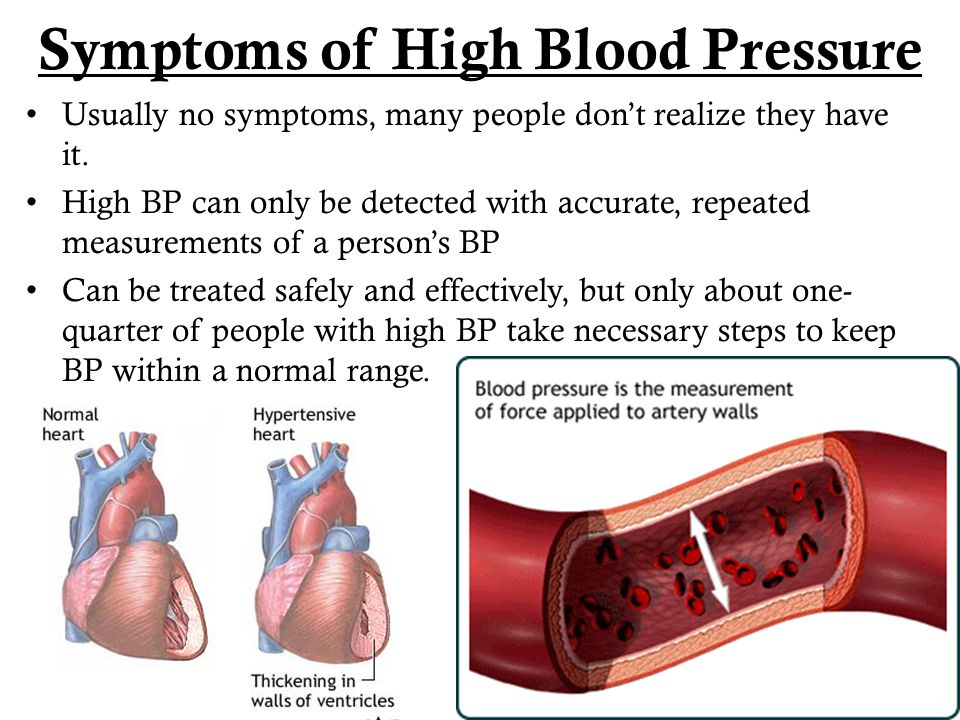 In the diagnosis of hypertension, we cannot do without an ophthalmoscope. According to the condition of the arteries and veins of the fundus, you can put the stage of hypertension and understand how long the patient has had hypertension. There is such a thing as malignant hypertension. This is not just high blood pressure, but high blood pressure with certain changes in the fundus.
In the diagnosis of hypertension, we cannot do without an ophthalmoscope. According to the condition of the arteries and veins of the fundus, you can put the stage of hypertension and understand how long the patient has had hypertension. There is such a thing as malignant hypertension. This is not just high blood pressure, but high blood pressure with certain changes in the fundus.
Brain. Hypertension can lead to stroke. Today it is believed that the most important and main cause of dementia in the elderly is long-term arterial hypertension.
Heart. The number one risk factor for developing angina and heart attack is high blood pressure. Just because you’re taking pills, it doesn’t stop being a risk factor! The pressure should not just be normal, it should be lower at night than during the day. Normal night pressure is 15% lower than daytime!
Male reproductive system. Atherosclerotic plaques can lead to impotence, lameness. Many hypertension medications can cause erectile dysfunction.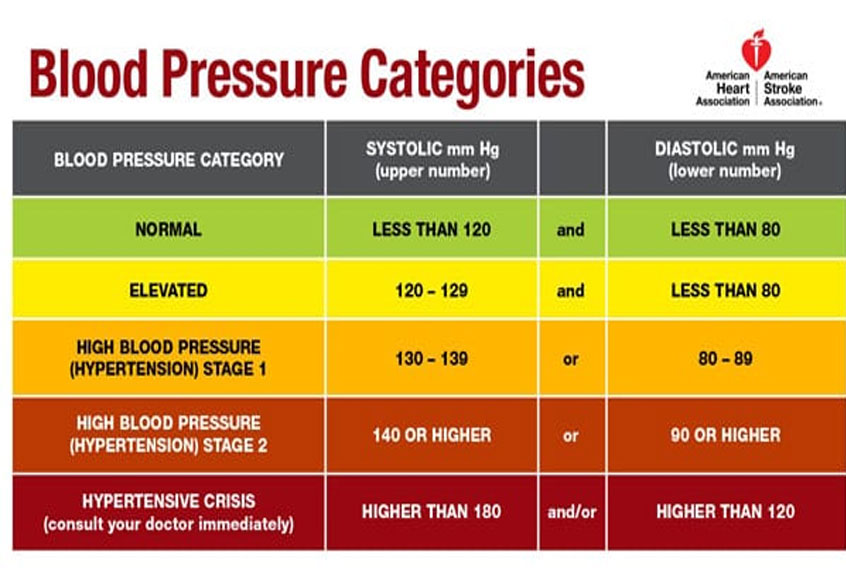
Advice from Dr. Myasnikov – eat seafood, move more, don’t forget to exercise your brain. Most importantly, keep your blood pressure under control! Take pills and do not forget about the right lifestyle! Be sure to reduce your salt intake to two grams per day. Your main goal is to normalize blood pressure!
treatment
Russia 1
hypertensive
hypertension
news
medicine
Alexander Myasnikov
Physical activity and nutrition in hypertension – personal experience of the patient
After reading the story of the teacher Maria Petrovna, you will find out whether it is worth treating arterial hypertension at the initial stage, what types of arterial hypertension exist and how you need to adjust your lifestyle in connection with the diagnosis.
Everything under control: how to live with hypertension
Arterial hypertension affects 35-40% of the adult population, and this proportion is constantly increasing 1 . Some believe that hypertension is not dangerous, and it is not necessary to treat it. This is wrong. Arterial hypertension is one of the risk factors for stroke and heart attack, so it is dangerous not to treat it. In this article, you will learn how hypertension is diagnosed, how it is treated, and what needs to be done to reduce the risk of cardiovascular complications.
Some believe that hypertension is not dangerous, and it is not necessary to treat it. This is wrong. Arterial hypertension is one of the risk factors for stroke and heart attack, so it is dangerous not to treat it. In this article, you will learn how hypertension is diagnosed, how it is treated, and what needs to be done to reduce the risk of cardiovascular complications.
What is arterial hypertension
Arterial hypertension is an increase in blood pressure: systolic – above 140 mm Hg. Art. and diastolic – above 90 mmHg Art. 1 Both indicators can be increased both together and separately. There are two types of arterial hypertension:
- 1
Essential. It is found in 90% of cases. The causes of essential arterial hypertension are unknown, there are only risk factors: hereditary predisposition, excess weight, sedentary lifestyle, excess sodium in the diet.
 Age also plays a big role: the older the person, the higher his chance of getting sick.
Age also plays a big role: the older the person, the higher his chance of getting sick. - 2
Secondary. This is 10% of cases of arterial hypertension that have a clear cause – a hormonal disorder or a problem with the internal organs. For example, secondary arterial hypertension can occur with hyperthyroidism – an excess of thyroid hormones.
If a person’s blood pressure constantly rises, but the doctor does not find the causes of secondary arterial hypertension, he is diagnosed with hypertension. It was this diagnosis that Maria Petrovna heard when, noticing a periodic deterioration in her condition and having undergone an examination, she came to the doctor with the results of tests and an electrocardiogram (ECG).
Maria Petrovna is an honored teacher of Russia and an experienced teacher who loves her job. Of her 52 years, she devoted 30 to working with students. Headache attacks, accompanied by weakness, palpitations and dizziness, forced her to give up class management, and later – from additional classes with students. During attacks, the pressure increased to 160/100 mm Hg. Art. After three sick days in a row, Maria Petrovna made an appointment with a doctor at a polyclinic, where she was scheduled for an examination.
Headache attacks, accompanied by weakness, palpitations and dizziness, forced her to give up class management, and later – from additional classes with students. During attacks, the pressure increased to 160/100 mm Hg. Art. After three sick days in a row, Maria Petrovna made an appointment with a doctor at a polyclinic, where she was scheduled for an examination.
How does hypertension manifest itself?
The main symptom of hypertension is an increase in blood pressure 1 . Weakness, headache and dizziness can occur with hypertension, but not necessarily. These are non-specific symptoms that also occur in other diseases 1 .
High blood pressure is dangerous to health 2 . A constant increase in pressure leads to a decrease in the elasticity of blood vessels and makes the heart work hard 2 . Target organs suffer from this: the heart, kidneys, brain. The outcome is different.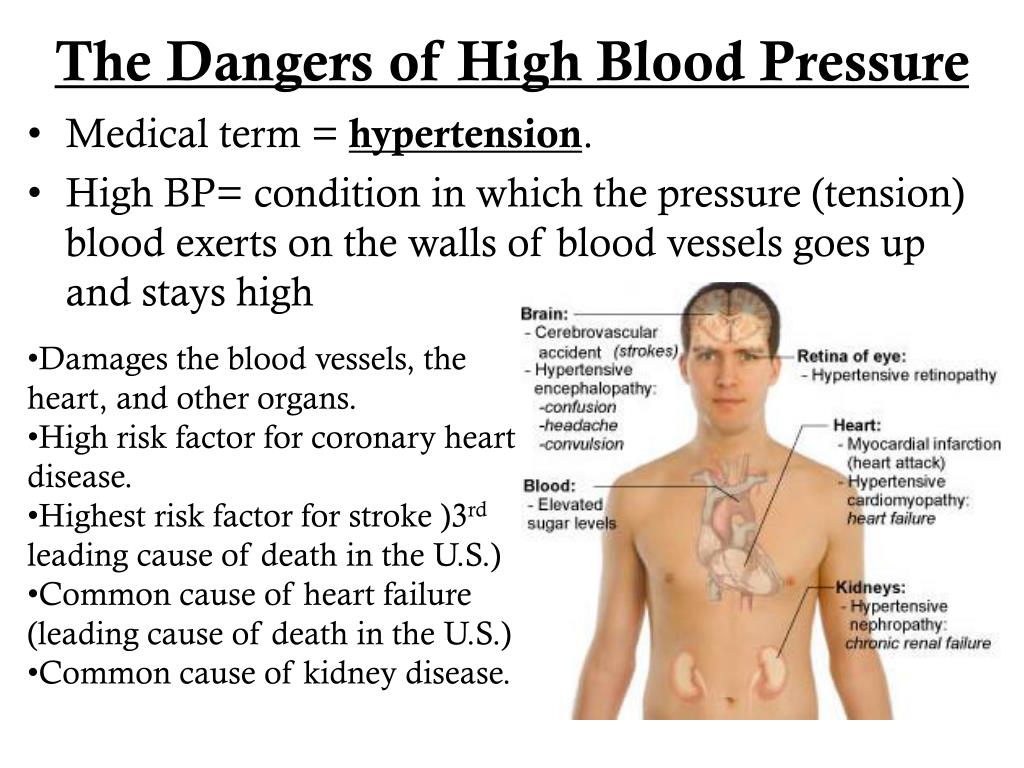 Someone develops a stroke, and someone has a heart attack, heart or kidney failure 1 . High blood pressure is a risk factor for premature death, and more than 200 million people worldwide have become disabled due to “normal” arterial hypertension 1 .
Someone develops a stroke, and someone has a heart attack, heart or kidney failure 1 . High blood pressure is a risk factor for premature death, and more than 200 million people worldwide have become disabled due to “normal” arterial hypertension 1 .
Maria Petrovna was lucky: she came to the doctor at the very beginning of her illness, when she could take arterial hypertension under control and reduce the risk of developing cardiovascular complications. The doctor wrote down the diagnosis in the medical record: stage I hypertension. Degree of arterial hypertension 1. Risk 1 (low). Target blood pressure
How to protect yourself
The doctor made a treatment plan and explained to Maria Petrovna that the key points of therapy are regular therapy (not only at the time of jumps), as well as lifestyle correction.
Medications
A set of drugs for the treatment of hypertension is called antihypertensive therapy 1 . Only a doctor can prescribe it. Not only the effectiveness is important, but also the tolerability of drugs: if something confuses you, it is important not to be shy to discuss it with your doctor. Since Maria Petrovna went to the doctor in time, the disease has not yet passed into the stage when serious disorders occur in the body.
Only a doctor can prescribe it. Not only the effectiveness is important, but also the tolerability of drugs: if something confuses you, it is important not to be shy to discuss it with your doctor. Since Maria Petrovna went to the doctor in time, the disease has not yet passed into the stage when serious disorders occur in the body.
Nutrition
People living with hypertension are prescribed the DASH diet 2 . Its name translates as “dietary prescriptions to reduce pressure.” Following the principles of the DASH diet has been proven to help lower blood pressure and lose weight.
Maria Petrovna also began to adhere to the DASH diet, due to which her diet increased the content of fiber, protein, magnesium (in dairy products), potassium and calcium (in vegetables, fruits, grains), macronutrients that help lower blood pressure 2 . At the same time, the consumption of products containing trans fats (fast food, confectionery, snacks, meat, milk, fried foods), cholesterol (meat, eggs, dairy products with a high percentage of fat content) and sugar has decreased 2 . Now Maria Petrovna eats more vegetables, less sweets, red meat and fatty foods, completely abandoned fast food, sausages, tries to cook boiled and baked dishes, avoiding frying.
Now Maria Petrovna eats more vegetables, less sweets, red meat and fatty foods, completely abandoned fast food, sausages, tries to cook boiled and baked dishes, avoiding frying.
The basis of the DASH diet are vegetables, unsweetened fruits, whole grains, poultry, fish, low-fat dairy products, legumes, seeds, and nuts 2 . Maria Petrovna is now monitoring her salt intake, the doctor told her that her food should not exceed 5 g (slightly less than a teaspoon) per day, including “hidden salt” (a lot of it in sauces and seasonings, bakery products, canned foods, pickles, sausages and many other industrial products).
Maria Petrovna loves sweets. At first, she was upset to learn that most of her favorite foods can no longer be eaten in the same quantities. However, she soon found a replacement for them. For example, instead of the usual ice cream, Maria Petrovna chooses healthy: fat-free and sugar-free. When it’s out of stock, she buys low-fat yogurt, adds sweetener to it, and freezes it. Maria Petrovna knows: there are many recipes on the Internet for those who decide to switch to a healthy diet – you just have to look.
Maria Petrovna knows: there are many recipes on the Internet for those who decide to switch to a healthy diet – you just have to look.
Eliminate stress
Psychological stress is an unfavorable factor for the functioning of the cardiovascular system 1 . It needs to be minimized. Everyone chooses a method for himself: someone quits a nervous job or reduces the load, and someone signs up for a psychotherapist to change their outlook on life. Maria Petrovna refused to conduct additional classes at school. Instead, she has become self-employed and invites the most diligent students to individual lessons at home.
Physical activity
People living with hypertension are advised to do 150 minutes of moderate exercise or 75 minutes of vigorous exercise per week 1 . Moderate physical activity is one that can be sustained for 1 hour 1 . For example, Nordic walking, cycling or swimming.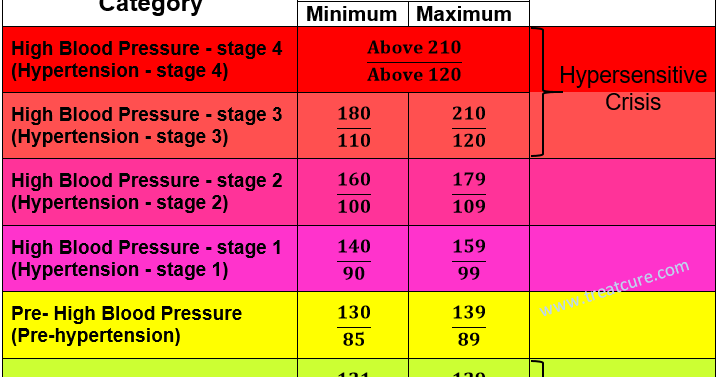 Intensive – one in which fatigue appears after 30 minutes. These are running, aerobics, fitness classes, interval training. During exercise, be sure to control blood pressure 1 .
Intensive – one in which fatigue appears after 30 minutes. These are running, aerobics, fitness classes, interval training. During exercise, be sure to control blood pressure 1 .
Maria Petrovna went to group classes – her daughter gave her a subscription to a fitness club. Before that, she underwent an examination and received a doctor’s permission for classes. Even when self-isolation began, Maria Petrovna did not leave training, doing online.
weight loss
Obese people are more at risk of slender hypertensive patients. The most dangerous is central obesity, when excess weight accumulates in the abdomen. Landmark – body mass index 1 . To calculate it, you need to divide body weight in kilograms by height in square meters. If the body mass index is more than 25 kg / m 2 , then the body weight is overweight. body mass index greater than 30 kg/m 2 indicates obesity 1 .
Let’s calculate Maria Petrovna’s body mass index. She is 166 cm tall and weighs 79 kilograms. body mass index \u003d 79 / (1.66 * 1.66) \u003d 28.6. Maria Petrovna is overweight, in order to return to normal, she needs to lose about 9-10 kilograms. Now she regularly measures her waist circumference – the doctor said to reduce blood pressure and cardiovascular risk, you need to aim for it to be 1.
Outcome
Two years have passed since Maria Petrovna found out her diagnosis. During this time, she began to feel much better. The pressure now does not rise above 120/80 mm Hg. Art., and from regular physical activity and proper nutrition, the state of health improved and the figure tightened.
Maria Petrovna realized that she was still quite young and it was too early for her to write off herself as a pensioner: she changed her wardrobe, turned to a beautician, signed up for English language courses. One trip to the doctor changed her life.
One trip to the doctor changed her life.
Let’s find out how Maria Petrovna’s usual day goes. For example, Thursday.
7:00–8:00 Getting up, hygiene procedures. Every morning, Maria Petrovna measures her blood pressure and enters the result in her diary.
8:00–8:30 Breakfast. Sweet oatmeal on the water, but instead of sugar – stevia.
8:30–9:00 Rest, reading didactic material, a cup of chicory, checking social networks.
9:00–10:00 Packing list and way to work: Maria Petrovna works in Moscow, but lives in the Moscow region. Her husband drives her to work.
10:00–12:00 Lesson for tenth graders. There is a light warm-up in between classes.
12:00–13:00 Lunch. Maria Petrovna takes lunch with her. Today it is veal with brown rice.
13:00–14:30 Next lesson. After classes, Maria Petrovna lingers for a short time in the teacher’s room and only then goes to the bus stop with a pile of notebooks.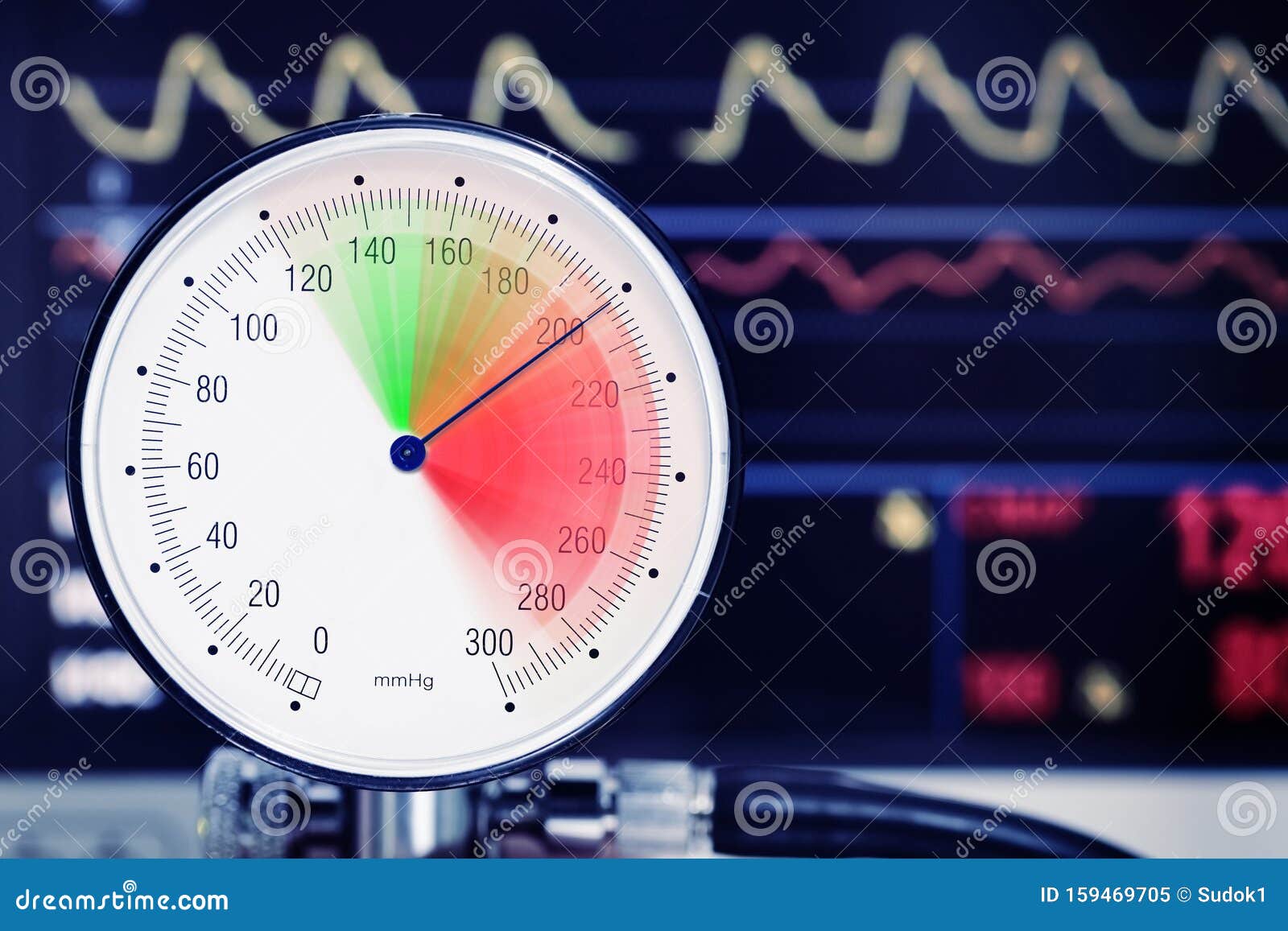
14:30–16:00 Way home. The rush hour has not yet begun, so Maria Petrovna saves money and goes home by train. She gets off two stops early for a walk and a health food store. Buys quinoa, brown rice and bran.
16:00–18:30 Afternoon snack. Maria Petrovna snacks on a whole grain bread sandwich with fish.
18:30–19:30 Dinner: baked pike perch with buckwheat and homemade fruit drink without sugar.
19:30–20:00 Small evening online workout. Maria Petrovna ordered fitness tapes, which allowed her to increase the load.
20:00-22:00 Personal care, reading articles on the Internet.
22:00-7:00 Sleep.
*The hero of the story is fictitious, all possible coincidences are random.
References
1. Clinical guidelines. Arterial hypertension in adults. Russian Society of Cardiology. Year of approval: 2020.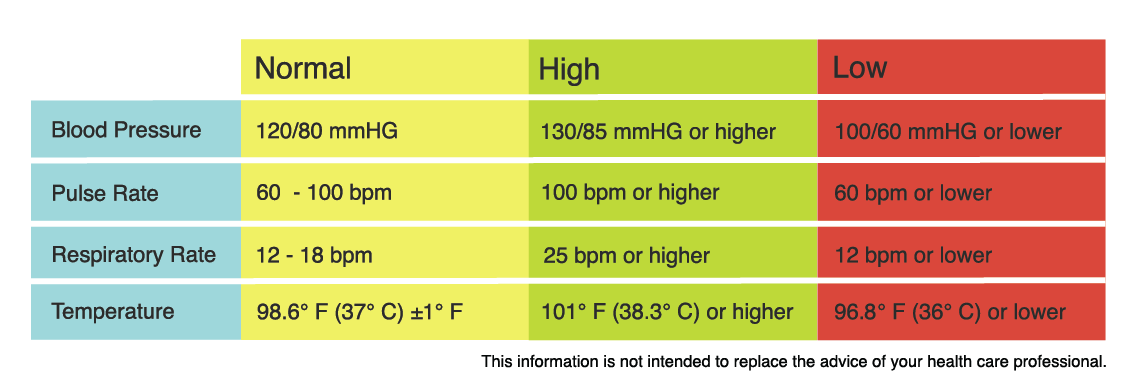



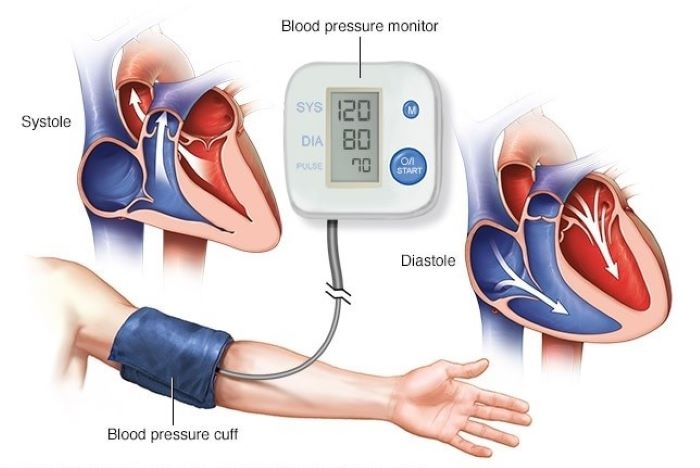
 Elevated blood pressure can damage the blood vessels in your eyes.
Elevated blood pressure can damage the blood vessels in your eyes. Age also plays a big role: the older the person, the higher his chance of getting sick.
Age also plays a big role: the older the person, the higher his chance of getting sick.